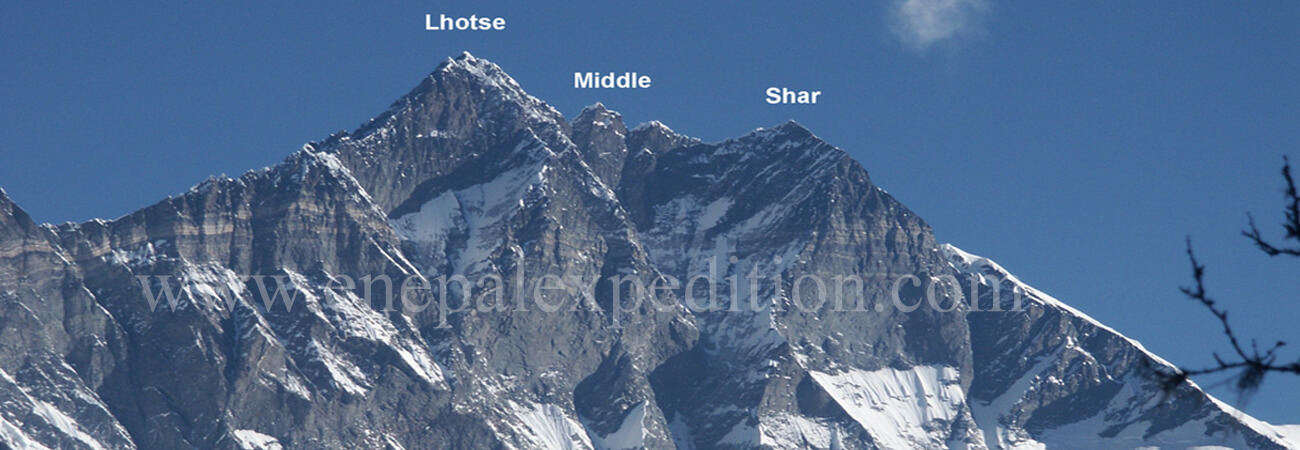Mt. Lhotse Middle 8413m. Expedition
Autumn
Fix Departure: 24 September, 2018
Location: Nepal (Khumbu)
Himalayan Range: Mahalangur Himal
Height: 8413m. - (27,657ft)
Latitude: 27º 57’ 42” N
Longitude: 86º 56’ 00” E
Trip Duration: 45 Days
Normal Ascent Route: West Face, South Face
First Ascent: May 23, 2001 by Eugeny Vinogradsky, Sergei Timofeev, Alexei Bolotov and Petr Kuznetsov of a Russian expedition.
Easiest Route: Snow/ice/glacier climb
Grade: Strenuous High
Caravan Route: Kathmandu - Lukla - Namche Bazaar - Labuche - Gorakshep - Lhotse Base Camp - Lukla - Kathmandu
Mt. Lhotse Middle highest unclimbed subsidary peak in the world, close to Lhotse main, the 4th highest peak of the world, to the west and Lhotse Shar the only slightly lower east peak of Lhotse to the east. Both other peaks have already been climbed. The Lhotse group lies directly to the south of Everest. Several expeditions have tried to climb Lhotse middle, but unsuccessfully. One of the problems is the fact that there are no ridges leading directly to the summit so first Lhotse main, or Lhotse Shar have to be tackled. Mt. Lhotse Middle remained, for a long time, its first ascent was made by Eugeny Vinogradsky, Sergei Timofeev, Alexei Bolotov and Petr Kuznetsov of a Russian expedition on May 23, 2001 at 03:00 pm. The Lhotse climbing standard route follows the same path as Everest's South Col route up to the Yellow Band beyond Camp 3. After the Yellow Band the routes diverge with climbers bound for Everest taking a left over the Geneva Spur up to the South Col, while Lhotse climbers take a right further up the Lhotse face. The last part to the summit leads through a narrow couloir until the Lhotse main peak is reached.
This Lhotse Middle expedition requires a high level of climbing proficiency on steep, exposed and technical skill and altitude experience is mandatory. It's an ideal climb designed for previous our Everest climbers or those who have tested climbs at 7000m +. All members will participate in a training session at base camp to make sure we are all on the same page with safety protocol and technical skills. To shorten the time spent in the ice fall in gaining acclimatization needed to ascend safely we test ourselves on higher objectives in the area. We provide a Camp 1 at but it is mainly used as stopover and emergency camp if needed. The plan will be for everyone to be prepared enough to move directly to Camp 2 (6,400m.), spend two nights and then move up to Camp 3 (7,200m.) on the Lhotse Face. We'll spend one night here before descending back to Camp 2 then the next day back to Base Camp where we will wait till the route has been established and camp provisions are in place for the summit push.

